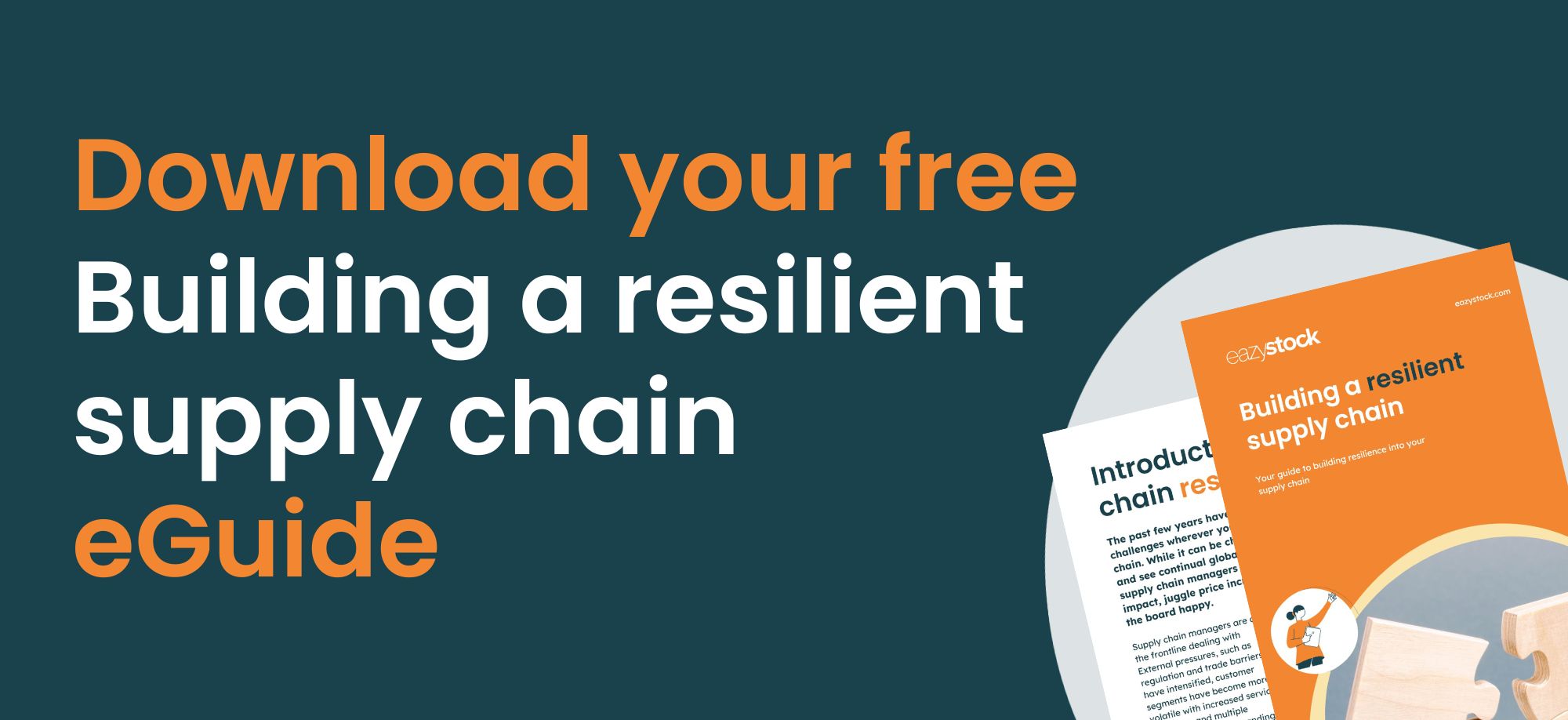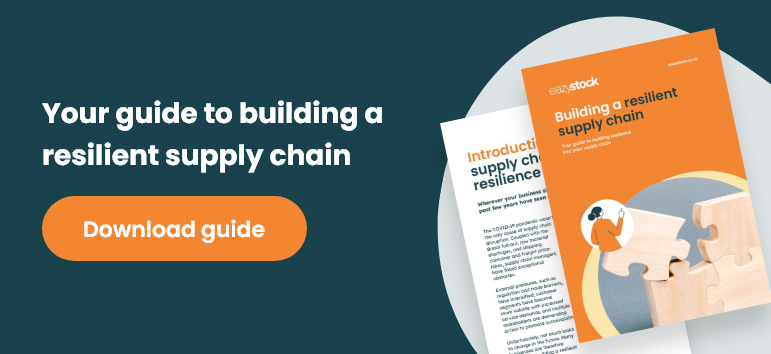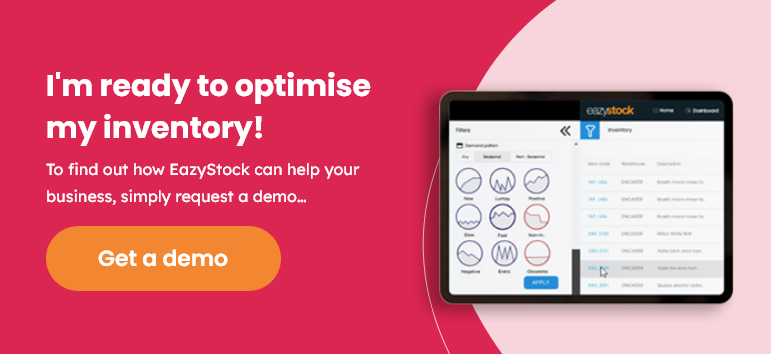Overcoming inventory management challenges
The last few years have seen the world rocked by many chaotic events. The global pandemic, continuing extreme weather events, conflict and natural disasters have turned normal life upside down and highlighted many weaknesses in global supply chains. From unpredictable customer behaviour and unreliable inventory supplies to rising logistical costs and internal capacity constraints, inventory management challenges can seem insurmountable.
Smooth supply chains are fundamental to stock-holding businesses. Without the right stock to meet customer demand, you risk stockouts and missed sales opportunities that could see your customers go elsewhere. On the other hand, if you hold too much stock to try and meet customer demand, you could tie up capital in costly excess stock, which could become obsolete. You need to find the balance between holding enough stock to meet demand to improve customer satisfaction with the minimum amount of capital investment to enhance board satisfaction.

Congratulations if you and your supply chain management (SCM) team adapted operations to respond to these issues! You’re one step ahead of your competitors, and you’ll probably be able to respond to future inventory management challenges.
If you are struggling to cope with previous events and don’t have the right inventory management processes and systems in place, don’t worry. We’ve pulled together a list of the top inventory management challenges and how you can switch up your inventory management systems to mitigate supply chain disruptions.
How do you do this? Inventory optimisation.
Manual processes
If you manually carry out your inventory management processes, you might think you have more control over what’s happening. However, manual processes introduce the possibility of human error and can be time-consuming. It’s easy to feel like you’re chasing your tail when juggling multiple spreadsheets trying to keep track of hundreds or thousands of SKUs, and how can you provide accurate demand forecasts when the information isn’t at your fingertips? Many inventory management teams spend too much time manually calculating forecasts, turnover rates, safety stock, and reorder quantities, analysing results, tracking KPIs, and updating the numbers.
Even sophisticated enterprise resource planning systems (ERP) or warehouse management systems (WMS) rely heavily on users manually inputting forecasting and replenishment parameters to automate any form of reordering alerts. When global supply chains are in a state of flux, any time teams save by using automation is time they can spend on more strategic tasks.
Modern inventory management involves modern inventory management software, which is why supply chain digitalisation is critical to mitigating supply chain disruptions’ impact and driving efficiency across their operations.
Inventory optimisation software is an essential piece of the puzzle when looking for a new inventory management system. It is critical in helping inventory managers understand and manage demand and supply variables, improve efficiencies and bring powerful data insights, providing a wealth of functionality to help during difficult times.
All of this makes it easier to find the elusive balance between holding enough stock to meet demand to improve customer satisfaction with the minimum amount of capital investment to improve board satisfaction.
How inventory optimisation software works
Inventory optimisation software, such as EazyStock, plugs into ERPs and WMS to automate forecasting, planning and replenishment tasks. The software automatically generates order proposals, which are dynamically calculated based on factors such as demand forecasts, dynamic stocking policies, target service levels, supplier lead times and internal constraints.
EazyStock sets reorder points and quantities considering all these variables and produces a daily list of recommended orders to feed into your ERP to create purchase orders.
As an inventory optimisation tool does all the heavy lifting, you can ‘manage by exception’, using software to flag issues that require additional human input. For example, highlighting unusual dips in demand or longer-than-expected lead times.
That’s not all. Inventory optimisation software can help you overcome other inventory management challenges in times of uncertainty.
Demand forecasting issues
Using 30-day rolling average calculations for demand forecasts only really works where demand is stable. As soon as demand fluctuates, they become unreliable, as they can’t consider changes in the market or understand trends.
Inventory optimisation software, such as EazyStock, uses a powerful statistical demand forecasting engine to generate forecasts for every item in your supply chain automatically. By classifying each item into one of seven different demand types based on its demand pattern, EazyStock can use the relevant algorithm to produce the most accurate base forecast. These will be much more accurate than a 30-day rolling average calculation in Excel or an ERP.

Identifying changes in demand
Tracking demand trends is critical to ensuring your stock levels match customers’ needs. A good forecasting tool identifies demand trends at SKU level and adjusts forecasts accordingly. With the cost-of-living crisis and fluctuating interest rates, marketplaces are changing daily. A system that reviews forecasts regularly allows you to optimise sales revenue without building up costly unwanted stock that could become obsolete.
Adding qualitative insights
All demand forecasts will benefit from qualitative insights. Unfortunately, we can’t predict the future, but this is where human interaction in most beneficial. Centralising data and experience currently in team members’ heads, such as feedback and data from your sales team, customers and industry bodies, can help fine-tune forecasts.
Dealing with inaccurate demand forecasts
With constant economic changes impacting customer behaviour, even the most powerful forecasting tools will find it hard to produce projections that are 100% accurate. To overcome this, the best inventory optimisation tools, like EazyStock, have built-in reports and alerts to act as a safety net. For example, EazyStock will:
- Track actual demand throughout the forecast period and alert you if it differs significantly from the forecast. These early warnings allow you to investigate the cause and monitor items going forward.
- Highlight demand outliers at the end of a forecasting period (e.g. anomalies in the forecast compared to actual consumption) so you can decide whether to include the figures in the upcoming forecast.
- Generate a daily risk of run-out report that details stock items at risk of going out of stock so you can form an action plan.
Stock outs
Optimising stock levels to help prevent stockouts during times of uncertainty is essential, and every inventory manager should closely track and identify business-critical stock items and react accordingly to alleviate supply risks. Inventory optimisation tools, such as EazyStock, offer great stock classification and analysis functionality to help.
Identifying and managing critical stock
With tight cash flow, businesses must invest in stock that will generate revenue and not sit in the warehouse. Many inventory management teams use the ABC classification model to segment stock items based on their value to the business. They then set different stocking policies to prioritise the availability of their category A items (that generate the most money) over B and C items. However, ABC inventory analysis is a very manual process and inventory segments date quickly, making it unsuitable for helping you keep up with today’s dynamic marketplaces.
In comparison, EazyStock automates this process by automatically analysing and classifying stock items based on a range of variables, including the cost of goods sold, pick frequency, demand volume and volatility. It provides an inventory matrix with over 200 segments (when required). EazyStock then automatically applies stocking policies (which you can manually adjust based on your market’s dynamics) to help achieve your target service levels (or stock availability goals).
EazyStock updates the inventory matrix daily, moving items between categories and automatically updating stocking rules as required.
With inventory levels dynamically optimised, you can invest funds in the right stock items to keep stockouts to a minimum while reducing the risk of excess inventory piling up.
Redistributing inventory across your supply chain
When the supply of many inventory items is disrupted, it’s essential to identify and utilise excess stock across your supply chain. Excess stock could include goods reserved for other markets with lower demand, items in stores currently not trading, or even obsolete products superseded by newer models. With EazyStock, you can easily identify this stock and redistribute it to locations with healthy demand to help alleviate supply pressures and help prevent stockouts.
Ensuring continuity of supply
Securing supply is possibly the most challenging task for inventory managers when there is a disruption in the supply chain. As suppliers return to ‘business as usual’ at various rates, supply issues could be set to stay.

Inventory optimisation tools, such as EazyStock, are designed to manage variances in supplier lead times, overcome supplier constraints and secure the most cost-efficient means of replenishment. Here’s how:
Variable lead times
EazyStock’s dynamic lead time feature helps mitigate the impact of supply delays on fulfilment. It does this by tracking actual lead times and sending alerts when they begin to deviate from the norm. You can then either manually adjust replenishment parameters, e.g. reorder points and quantities, safety stock, etc., or let the system update them automatically.
Supplier management
Having open and honest communication with your suppliers about their fulfilment capabilities will be vital in alleviating bottlenecks in supply. Using EazyStock’s order scheduling functionality, you can create future order projections (based on your forecasts and their lead times) for your suppliers to feed back on. Where supply risks are apparent, you can devise a Plan B, for example, rationing stock across your business, raising prices to lower demand, or looking for alternative suppliers.
Deciding which supplier to use
When placing replenishment orders, you may find you have a number of suppliers to choose from. Often, you’ll get a lower unit price by using the supplier with the higher minimum order quantities (MOQ) and longer lead times – and vice versa. When supply chain disruption impacts these variables, this rule may no longer apply, and sometimes, it may be wiser to pay more for shorter lead times to ensure stock availability.
EazyStock can help by recommending the supplier who can fulfil the order within a lead time that meets target service levels while doing so in the most cost-effective way. For example, if an item is at risk of run-out, it will recommend ordering the MOQ from the supplier with the shortest lead time and ordering the remaining stock from a more cost-efficient merchant.
Working around operational constraints
You may need to adapt your usual order-processing procedures during uncertainty and disruption. EazyStock’s order calendar feature lets you enter the days you want to place orders (based on your or your suppliers’ internal constraints). It then automatically recalculates reorder quantities and safety stock levels to prevent these issues from impacting stock availability.
EazyStock: A smarter response to inventory management challenges
To respond effectively to supply chain disruption challenges, your team must focus on managing customer expectations and solving supply chain disruption. You, therefore, need to reduce the time they spend processing data, manually forecasting demand and calculating replenishment parameters.
EazyStock offers an easy-to-implement solution that delivers an ROI within months of going live. Inventory planners can instantly operate smarter and more efficiently. In turn, businesses will see fewer stockouts and lost sales while freeing up capital due to lower stock levels.
Contact our team today if you want to learn more about how EazyStock can support your inventory management processes.











